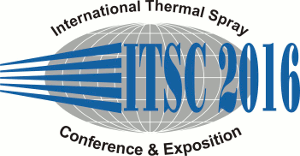| Authors: |
Pengyun Xu / University of Toronto, Canada
Larry Pershin / Centre for Advanced Coating Technologies, Faculty of Applied Science and Engineering, University of Toronto, Canada
Thomas W. Coyle/ Centre for Advanced Coating Technologies, Faculty of Applied Science and Engineering, University of Toronto, Canada
Javad Mostaghimi*/ Centre for Advanced Coating Technologies, Faculty of Applied Science and Engineering, University of Toronto, Canada
|
|
| Abstract: |
Vacuum plasma spray (VPS) has great potential to fabricate dense coatings with stronger inter-splat boundaries and fewer voids and cracks, due to the unique plasma jet properties in low pressure chamber. In this study, zirconia coatings were fabricated by the vacuum plasma spray process using two modifications of 8 wt% yttria stabilized zirconia (8YSZ) powder HOSP and fused and crushed. Plasma torch was F4 from Oerlikon Metco operating with Ar-H2 plasma gas mixture. The relationships between the plasma spray process parameters and the in-flight particle velocities and temperatures under vacuum and atmospheric conditions were investigated in real time using a DPV 2000 (TECNAR Automation Ltd., Saint-Bruno, Québec, Canada). In addition to the in-flight particle status, the substrate preheating temperature was also taken into consideration. The process parameters yielding dense zirconia coatings were determined. The microstructures of coatings deposited by VPS were correlated with the in-flight particle status and compared with the coatings deposited using the atmospheric plasma spray process. Thermal shock resistance of more dense VPS coatings was evaluated by thermal cycling at 1000oC and cooling by an air jet.
|
|
